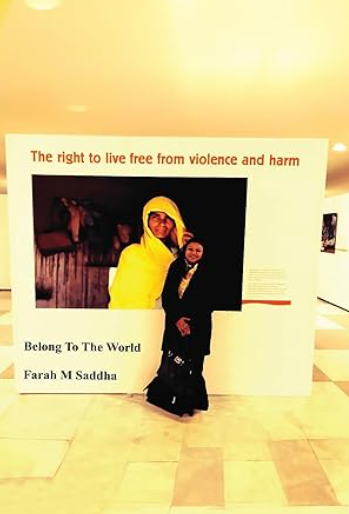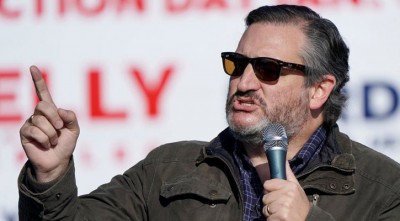“This is a full nude shoot to be conducted underwater,” a woman said into a phone, her voice carrying across a row of cubicles.
“Right, that’s right,” she continued. The person on the other end didn’t seem to quite get it. “As in, it won’t be on land.”
It was a Tuesday morning at the Westwood headquarters of Playboy Enterprises, and editors were preparing to close their summer issue. Gathered between a velvet love seat and a view of Santa Monica, they discussed upcoming stories — a piece on BDSM, a profile of Pete Buttigieg — while in the kitchen, a barista stencilled bunny ears into latte foam.
In his office, Shane Singh, Playboy’s executive editor, explained that the underwater photo shoot, to be photographed that weekend, was for the magazine’s cover — but not in the way that older, leering readers might expect.
“The water is meant to represent gender and sexual fluidity,” Singh said, seated beneath a 1988 Herb Ritts portrait of Cindy Crawford. The women who would pose in that water — their limbs wrapped around one another in a balletlike pose — were not simply models but activists. One uses performance art and digital media to share stories about the HIV epidemic. Another is an underwater dancer who promotes ocean conservation. The third, a Belgian artist, recently filmed herself walking naked through a Hasidic neighbourhood of Brooklyn during a sacred holiday. (An angry mob chased her out.)
“When they called me for this shoot, I thought there must be some kind of mistake,” Ed Freeman, the fine art photographer who created the cover image, later told me. “I hadn’t paid attention to Playboy for many years, since I was a kid. And I thought: ‘Wait, they’re hiring me to shoot the cover? Do they know I’m gay?’”
This is a newer, woke-er, more inclusive Playboy — if you believe what company executives tell you, and if you are inclined to give an aging brand yet another chance at reinvention.
Even before the #MeToo movement, there had long been debate over whether a publication with the tag line “Entertainment for Men” had any place in an equitable world. But when Playboy’s founder, Hugh Hefner, died in 2017, that argument grew louder: Had Hefner been a forward-thinking voice for sexual liberation and free speech or a creepy old lech who fostered a culture of misogyny?
At the time, Playboy was in a dizzying sequence of revival attempts. In recent years, the company has cut the magazine’s circulation; reduced its frequency; stopped printing ads; replaced chief executives; and, most notably, briefly banned nudity — before bringing it back, with the tag line “Naked is normal.”
Early last year, Ben Kohn, a financier who had helped take Playboy private in 2011 and is now chief executive, told The Wall Street Journal that he was considering getting rid of the magazine to focus on licensing and joint ventures. But instead, Playboy was quietly relaunched this year — this time as a thick-stock, matte-paper, ad-free quarterly. It is edited by a millennial triumvirate: the openly gay Singh, 31; Erica Loewy, 26, the creative director; and Anna Wilson, 29, who oversees photography and multimedia. There had been women in the latter two positions before, but never both at the same time.
The result is a magazine that is virtually unrecognisable from the one Hefner created — and, for the first time in Playboy’s history, with no Hefners involved. Not Hugh, of course, nor his daughter, Christie, who was chairwoman and chief executive from 1988 through 2008, nor his son Cooper, who stepped down as chief creative officer in April. (He said he would start his own adult content portal, HefPost.) A Playboy spokeswoman said the Hefner family no longer had a financial stake in the company.
The summer issue, out now, features an interview with Tarana Burke, the activist who founded the MeToo movement, conducted by Dream Hampton, whose documentary about R. Kelly led to multiple charges against the singer. There is a queer cartoon and a feature on gender-neutral sex toys. The fall issue will feature a photo feature by artist Marilyn Minter celebrating female pubic hair.
“We have red hair, blond hair, black hair — it’s basically every colour of the rainbow,” said Liz Suman, 35, the magazine’s arts editor. She added that elsewhere in the publication, “I’ve been sneaking in some penises, too.”
“Stuff like that wouldn’t have happened a year ago, for sure,” she said. “Or maybe it would have — but it wouldn’t have been celebrated in the same way.”
During its heyday in the 1960s and ’70s, Playboy represented, to a certain breed of male consumer, a lifestyle: lavish, aspirational, sexually adventurous. Reaching nearly 7 million subscribers at its peak, the magazine published the work of Andy Warhol, Margaret Atwood and Hunter S. Thompson, as well as interviews with the likes of the Rev. Martin Luther King Jr. and Fidel Castro. Soon there were clubs and resorts and casinos, as well as a “Big Bunny” jet with a discothèque inside.
But then came more explicit national magazines like Penthouse and Hustler, video pornography that made those magazines seem tame, and the internet, which derailed both paid smut and print publishing by making it all free.
Hefner sold the jet, and executives experimented with ways to enliven the brand, including an E! reality show, “The Girls Next Door,” which followed the exploits of a pajama-clad Hefner and his multiple live-in girlfriends. (One of the women, Holly Madison, later wrote a book in which she described Hefner as emotionally manipulative and said the women were expected to have group sex.)
But the company was losing money. It sold its TV and digital operations to an internet porn outfit, and in 2011, Hefner secured financing to take the company private.
“I was there for sort of the last gasp, the last hurrah,” said Jimmy Jellinek, a former Maxim editor who served as Playboy’s chief content officer from 2009 to 2015. “We always believed in what I called ‘death with dignity.’ We never saw any way out of the spiral that we were in — no amount of reinvention, of taking out the nudity, of making it more interesting to millennials. So we decided let’s be as good as we can be, in the context of what we are.”
While the magazine withered, certain aspects of the Playboy brand remained viable business lines. Kohn, the chief executive, refers to it as the “world of Playboy”: branded spirits, furniture and perfume, fashion collaborations, a casino in London, pop-up events, a recently reopened nightclub in New York and more — especially in China. There, the brand has more than 3,000 stores selling suits, leather goods, luggage and outdoor clothing, Kohn said.
Playboy no longer publishes its financial results, but Kohn said consumers spend some $3 billion on the company’s products and services each year. Relaunching the magazine, he said, made sense as a kind of “brand extension.” He likened the future of the company to Gwyneth Paltrow’s Goop.
This newer, socially conscious version of Playboy has meant some changes to the vernacular that has long defined it.
Bunnies — the restaurant servers who work in the Playboy Clubs — are now “brand ambassadors.” Playmates — the women who appear as nude centrefolds — are no longer Miss September, for example, but the September Playmate. (There are three in each quarterly edition.) They are paid as freelancers and often continue to represent Playboy at public events; the company said it was working to provide them with health care benefits.
In the office, members of the staff use terms like “intersectionality,” “sex positivity,” “privileging” and “lived experience” to describe their editorial vision — and tout their feminist credentials. Two editors are former employees of Ms, the magazine co-founded by Gloria Steinem.
The photography looks different, too. Playmates — who no longer appear on the cover — are primarily shot by other women, with artsy angles and intimacy coordinators on the set.
“Something we always say to each other is that we create with intention,” said Loewy, the creative director, her desk covered with mock-ups for an upcoming shoot. Loewy was in a red dress and gold hoop earrings, a tiny jewel adhered to one of her front teeth.
“We think about everybody on set,” she continued, “from the PAs to the caterers to the makeup artists. Nothing is not considered in the creation of what we make.”
When Ryan Pfluger, who recently shot Time’s cover of Buttigieg, was hired to photograph actor Ezra Miller, he was told to “shoot Ezra Miller — but make it queer,” he said. (Miller ended up choosing to appear in high heels and bunny ears.) For the issue on stands now, Loewy reached out to Spanish artist Carlota Guerrero, the creative director for Solange Knowles. Guerrero pitched the idea of defying Barcelona’s topless ban by marching a group of seminude women, including transgender women and prostitutes draped in red fabric and red body paint, through the city’s red-light district.
On “a street that is predominantly owned by men and where every girl has a story of fear to tell,” Guerrero wrote on Instagram, “it was a statement for us to take that space back.”
“We talk a lot about what’s the Playboy gaze and how we need to diversify that,” said Rachel Webber, 37, the chief marketing officer. She joined the company last year from National Geographic in part, she said, because of the opportunity to bring a “heritage” brand into the modern era. “It’s who is behind the camera as much as in front of it.”
“It’s a little like being in a gender studies class,” she added.





















